The Ogso Corbet’s SR UL holds up as a mighty fine double rockered powder ski. Buyer beware–in the right snow, big smiles will be had.
Intro
“Dude, those lines are ridiculous. And probably violate more than a few obscenity laws in certain overzealous municipalities south of the Mason-Dixon, but shit-yeah, I’ll giver ‘er a go.” Such was my response when offered the opportunity to mount up a pair of Ogso Corbett’s 110s. My expectations for these boards were quite low. The twin tipped, uber-rockered shape screamed switch skiing freerider (which I’m not, but can appreciate): Not ultra-light, steep and deep seeker (which I am). Not to mention, I was more than a little suspect of the kitschy Corbett’s moniker. However, curiosity got the better of me, and I gladly admitted the fallacy of my close-mindedness. My interest was further piqued by reading the limited reviews of other Ogso skis and recalling the praise my buddy Kelly dropped on a pair of Ogso Jager 80s he brought on a Winds traverse a couple of years ago. Mt expectations were blown out of the water. Without hyperbole or exaggeration, in the right conditions, which is to say the deepest days, these skis are the most fun I have ever had on skis. Period.
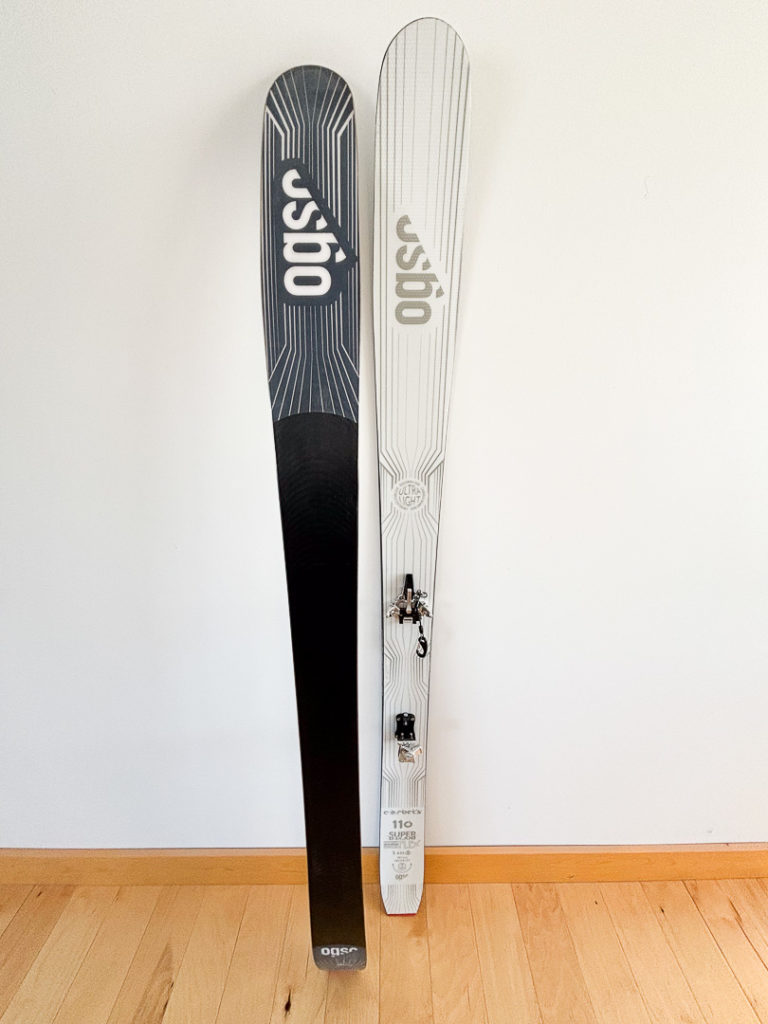
Prepping for this write-up, thinking about these skis, recalling the days I’ve spent on them, one word kept coming into my mind: fun. I’m going to give you background and specs and tidy little vignettes, and everything you’ve come to expect in a THR ski review, but know this, the Corbett’s 110 are ridiculously fun to ski.
You may have seen glimpses of Ogso skis around, having a small but growing presence in the US, relative to their seemingly more expansive European footprint. Founded in 2015, Ogso is a smallish ski company “based in Chamonix” according to their site, however the company operations are spread from France to Malta to design and production facilities in Tunisia, culminating in an overall decidedly French marketing vibe.

Design Highlights
The baptismal name of the Corbet’s 110 is the Corbet’s 110 SR UL. SR for super rocker, UL for, you guessed it, ultra light. Super rocker says everything you need to know. (Perhaps channeling the propensity of Teton hardmen to unabashedly rock mullets and various incarnations of punk-rock hairstyles contributed to Corbet’s-Super Rocker double entendre?) The aesthetics of this ski scream rocker, even now when I look at the ski, my eye is immediately drawn toward the vertical dimensions of the tip rocker. Not just the tip; the 187 cm length I ski has 240 mm of both tip and tail rocker, with 825mm of effective running length. At 187cm, the shapely Corbet’s sports widths of 142-112-127mm, tip to tail, with 3mm of camber underfoot and weighing in at a svelte 1635g per unmounted board.
This ski is clearly a powder specialist. According to their website, Ogso designed the Corbet’s with a relatively soft flex and ample rocker and tip rise to mitigate the need to lean back to keep the tips aloft on deep days, allowing the rider to stay forward and balanced. The rocker, pardon me, the Super Rocker, coupled with a short turn radius, results in near instantaneous turn initiation and the ability to ski the Corbet’s quite aggressively, hence the red-lined fun factor of these skis. Translated: the massive rocker allows less of your brain to focus on tip flotation and more on stirring.
The bones of the Corbett’s are, what has become seemingly standard fare for modern weight conscious touring skis, “a carbon reinforced paulownia wood core.” but a look under the hood reveals substantially more nuance, thought and attention to detail. The wood core is sandwiched between layers of fiberglass and carbon fiber. There’s ample enough glass fibers in the layup to make this somewhat light-phat build ski above its weight class.
(Fun fact to generate conversation on the skinner: Paulownia wood, a genus of 17 species of strong, low density wood native to southeast Asia, named for Anna Pavlovna, Russian consort to the Netherlands and the daughter of Russian Tsar Paul I, circa 1800. Thanks Wikipedia.)
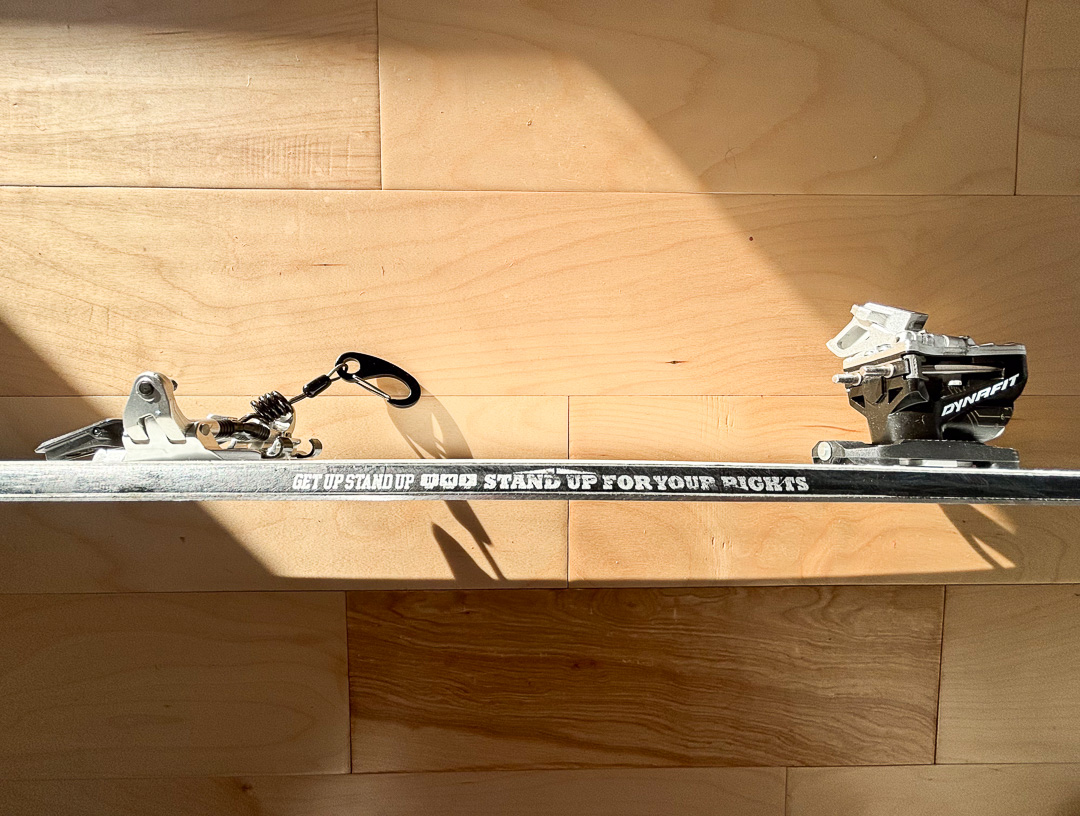
That damp ski feel is assisted by ABS sidewalls and a rubber foil dampener between the base and the stainless edge. Ogso uses a bio based resin on the Corbett’s. Much of the carbon content in their resin comes from plant origins, making the Corbett’s mostly vegan, unless there’s bacon, and no one is watching. Speaking of sidewalls, Ogso puts the real estate to work dropping poetic knowledge, in this case citing the perennial guidance of Robert Nesta Marley, GET UP STAND UP, STAND UP FOR YOUR RIGHTS (Jah Rastafari).
Short aside, if you’re one of those folks whose gear obsession has morphed into an admission, at least to yourself, as a closet materials nerdist, I highly recommend spending time snooping around OGSO’s site. https://ogso-mountain-essentials.com/product/corbets-110-sr-ul/ They go deep on the construction of their skis, particularly a great 3D dissection of their boards and background info on each component of the ski, of which I have paraphrased greatly, above.
Testing Setup
I mounted the Corbet’s with the ol’ reliable Dynafit Speed Radicals (340g) in a brushed aluminum/silver anodizing, resulting in a nice muted chilly vibe. The perfect aesthetic to match the color spectrum of those flat light, low pressure days that deliver the precious these skis were built for. The combined setup weighs just shy of 2kg per. Not crazy light, but definitely respectable given the widths we’re talking about. The Corbet’s arrived with a set of precut Contour Hybrid skins with tip and tail kits. My first experience using Contour skins, they worked quite well in cold conditions, but were an absolute fail, that no amount of glop stopper could remedy, on a warm afternoon above the inversion in the Tetons. Tecnica Zero G Tour Scouts are the boot’s of choice. Could one use a lighter, 1 kg class boot in dry fluffy snow to drive the Corbet’s? Yes, indeed.
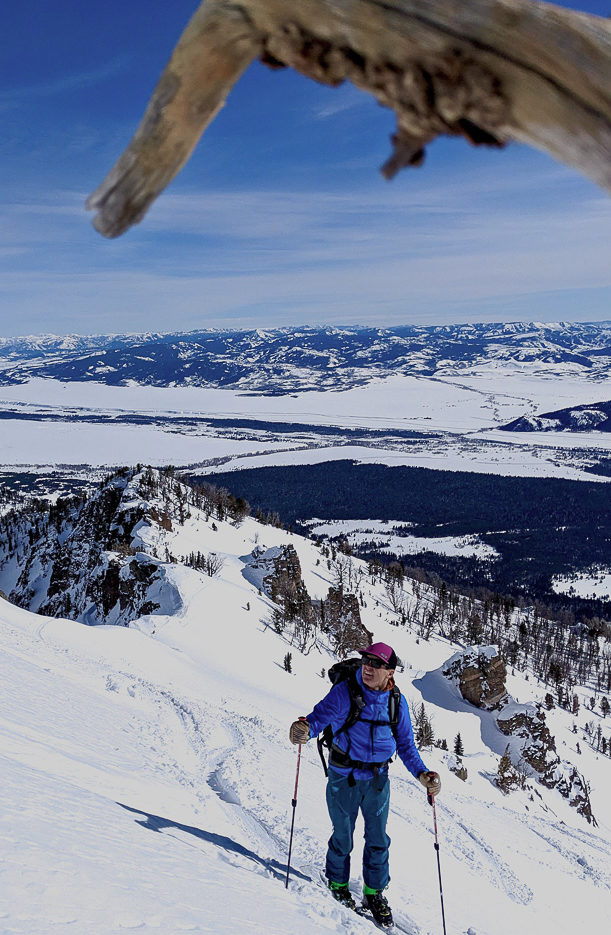
Field Testing
Last winter’s (22/23) La Niña provided opportune testing conditions for the Corbet’s in their native habitat. “They” say that first impressions are everything. My first impression aboard the Corbet’s was a perma-grin. Fortuitously, right after mounting the Corbet’s, northwest Wyoming got the storm of a cyclically stormy winter. Dropping over 4 ft. in some parts of the Tetons with a bit less elsewhere, avalanche danger was redlined and demanded conservative decisions. Read that as lower angle and or tighter trees. Settling into the skin, I noticed the skis’ relative Generous tip rocker helps break trail.
Gaining elevation, the grade increasing I was anticipating the inevitable leg kicking struggle-fest of punching the skinner on a big day. It never came. Swapping leads breaking trail, my esteemed colleague, who was mounted on an equally wide, but more traditionally shaped ski, soon found himself enmeshed in the pig wallow. Taking back over the push, I marveled at how well the Corbet’s rocker propelled the tip to the snow surface, resulting in a relatively effortless climbing experience. Buyer beware, due to the efficiency of how well the Corbet’s climb you may be setting a disproportionate amount of track.
Transition and tea lead to a few tentative, but flirtatious, turns, which were met with stability and quick reaction. I kept pushing, my confidence and enjoyment exponentiating. The lower angle ridge top glade rolled over to the steeper northwestThe trees tightened, the slope steepened, the Corbet’s reacting with the slightest suggestion of a turny My smile grew. Pole tap fist bumps, exclaimed superlatives, huge smiles, temporary enlightenment. The reason we go to the mountains; joy through effort.
Stormy February gave way to March high pressure. Cold valley forecast temps fooled me into visions of light snow from the previous storm and Corbet’s conditions. Silly, I made the JV move of irrational exuberance and failed to anticipate the intensity of the inversion and mid elevation warmth. The high density midday mashed potatoes illustrated the limits of the soft flexing Corbet’s. Skiable, but not unbridled joy.
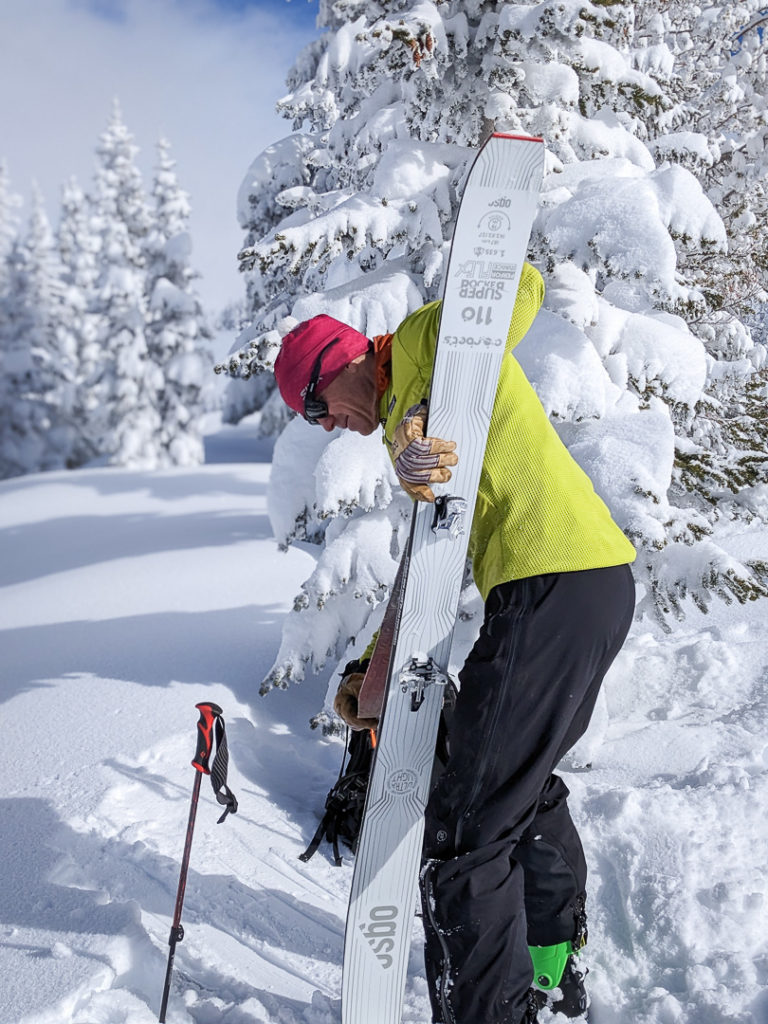
In between hikes, I threw the Corbet’s in the truck along with a stiffer setup, for a couple of friends and family days at Targhee with my 10 year old and his grom posse. A couple inch days preceded a respectable foot plus dump. I grabbed the Corbet’s and a honeybun at Snorkels and caught the chair. A lap or two of untracked lines gave way to chop later in the day. The soft flexing Corbet’s were every bit as enjoyable in the fresh as I remembered, but had enough stiffness to gleefully handle the cold chop midday. Obviously, not designed to rip groomers, they were still fun and carvey on hardpack, albeit with some expected chatter, leading to seeking out any little nugget of untracked while the kids ripped groomers.
Conclusion
Of course we lapped the tree line all day back in February. What I came to realize while in the skin track trance that day, what I took for granted, is that the design of the uber rockered Corbet’s made for a better day in the mountains. The (frozen) hydrodynamic (what’s the snow analog for hydrodynamics?, neve-dynamic?) efficiency of the ski on the up, the tip glide breaking trail in deep snow, the surface area and reduced weight underfoot, results in increased efficiency and athletic ability of the skier. Translating to more laps, more vert, longer days with friends, greater safety; more fun.
The Ogso Corbet’s is not a daily driver, it is an unabashed powder specialist, the lower the density the better. On the down, the tip and tail rocker allow for super easy turn initiation and transition. Dating myself here, but in the Golden Age of backcountry skiing, during the tele-randonee war year of the 1990’s, K2 capitalized on the “telepathic” marketing innuendo. Skiing the Corbet’s, that adjective kept coming back to me, telepathic. Choose your metaphor, these skis are ‘telepathic”, “point and shoot”…they are super stable, super responsive and super fun to ski. Isn’t that enough? Behind all the rad pics and all the pimped gear, at the root, it’s the play, the fun, the joy. On deep days, the Corbet’s will bring more joy to your life. Ultimately, isn’t that why we go to the mountains?
Specs
Available lengths (cm): 171, 179, 187, 195
Weight: reported, unverified: 1.3kg, 1.5kg, 1.635kg, 1.755kg, respective of length
Side cut: 30mm
Turn radius (m): 17, 19, 21, 24, respective of length
Factory Mount point (187cm): -12cm
Core: Paulownia/carbon/fiberglass
Build Comments: Quite lightweight given dimensions
Shape: Super Rockered
Cosmetics: Muted chilly deep winter vibe
Similar Models: DPS Pagoda Tour 112 RP
Price: $799…and since it is spring, this is a great time, in fact, to eye a powder ski on sale.

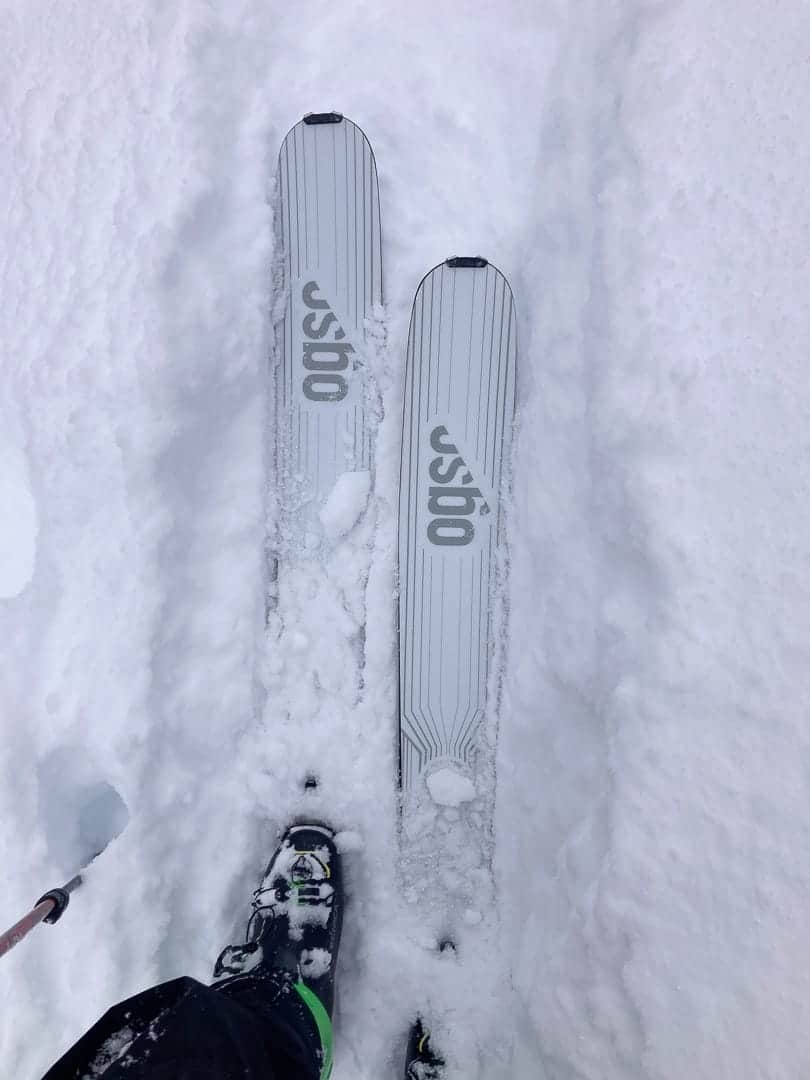


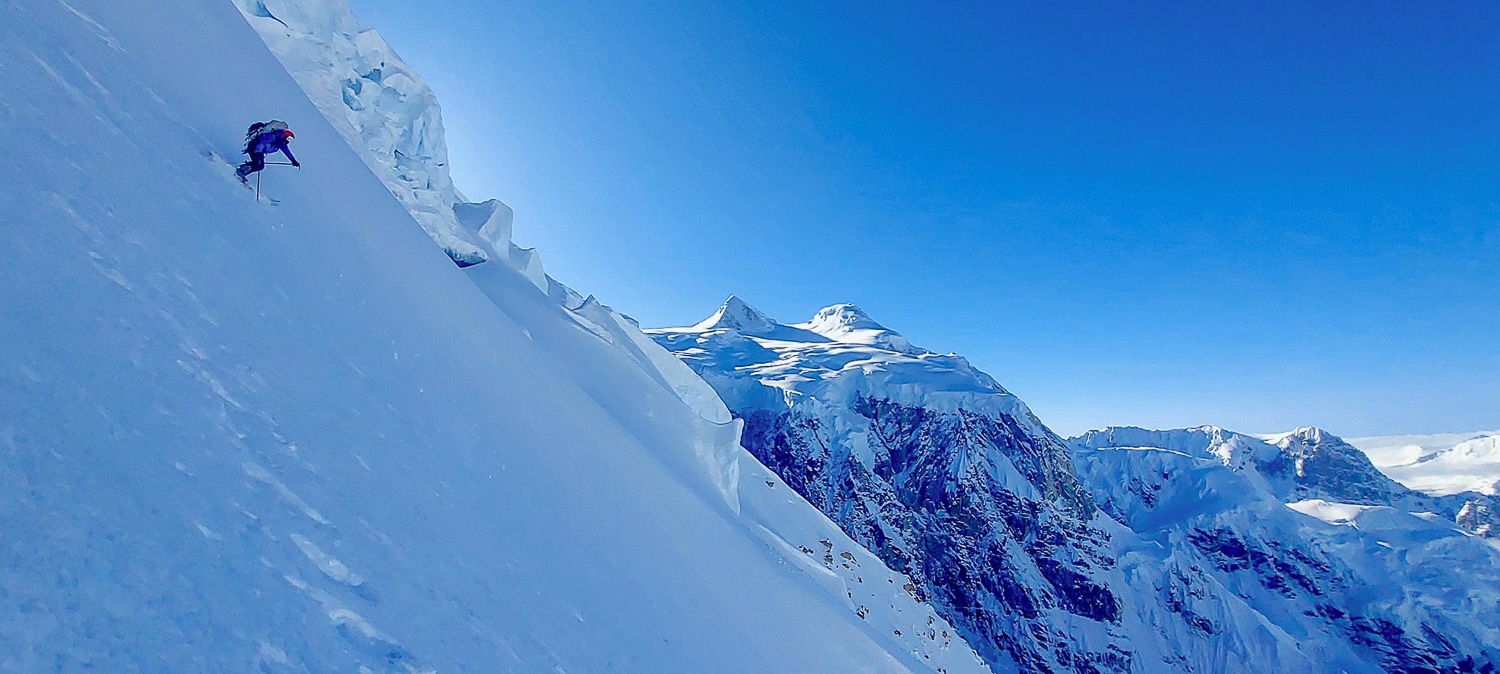
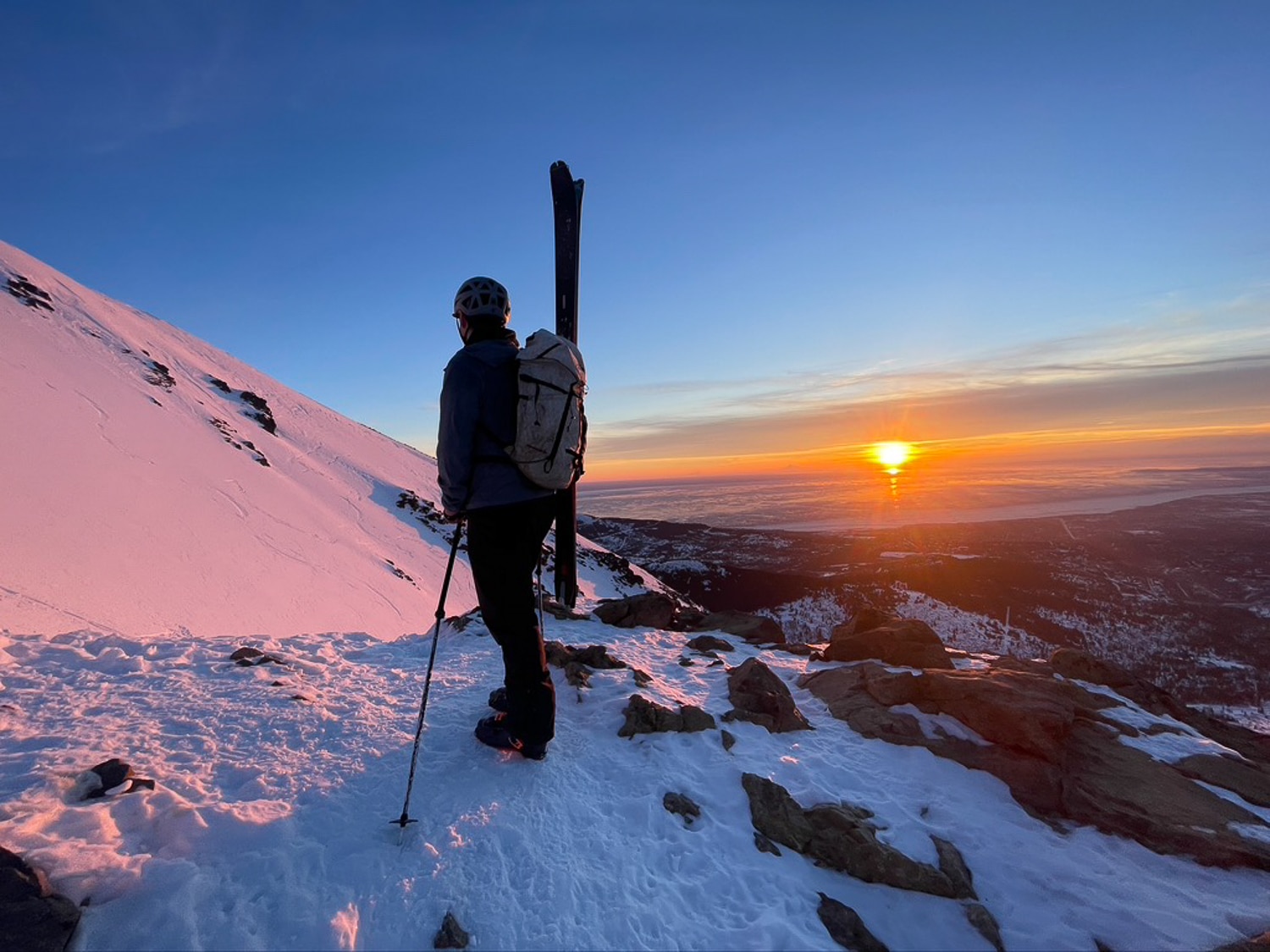
Leave a Reply
You must be logged in to post a comment.